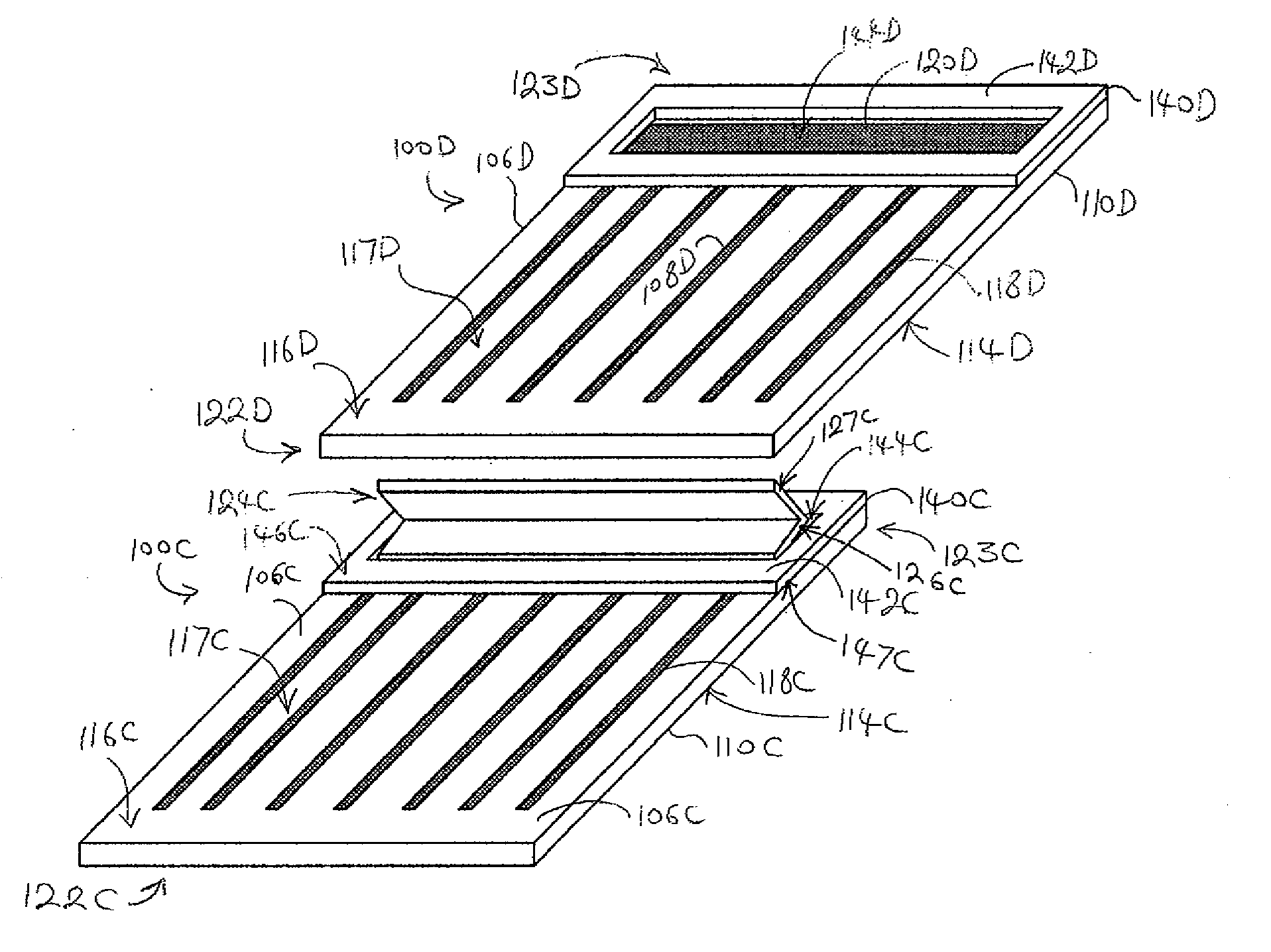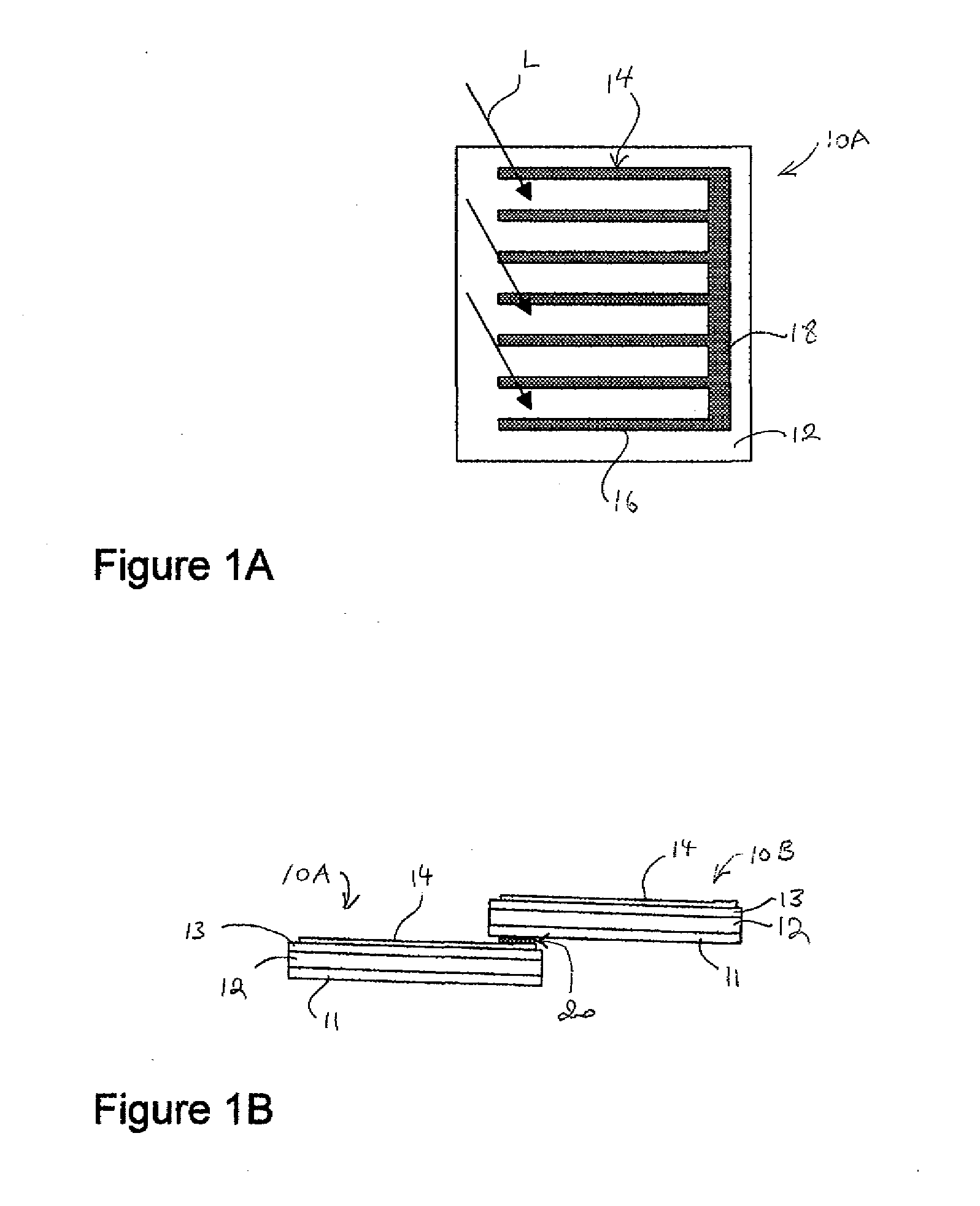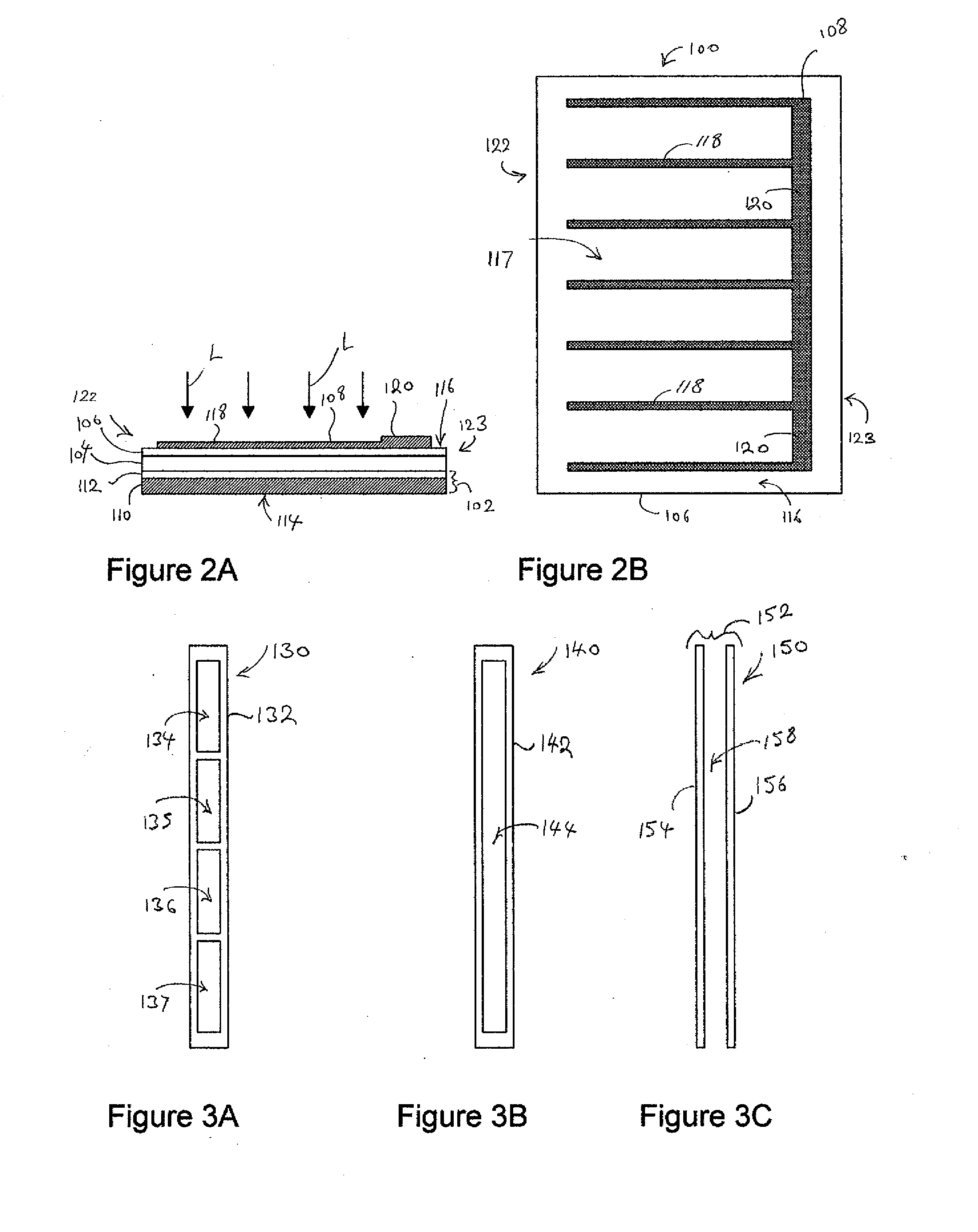Methods for interconnecting photovoltaic cells
a photovoltaic cell and interconnection technology, applied in the direction of photovoltaics, electrical equipment, semiconductor devices, etc., can solve the problem of greater shorting potential in the interconnection circui
- Summary
- Abstract
- Description
- Claims
- Application Information
AI Technical Summary
Benefits of technology
Problems solved by technology
Method used
Image
Examples
Embodiment Construction
[0025]The preferred embodiments described herein provide methods of interconnecting solar cells or photovoltaic cells. In one embodiment, the solar cells, for example a first and second solar cells, may be interconnected in series in a manner referred to as a shingled relationship such that a substrate portion of the second solar cell overlaps with a surface portion of the first solar cell.
[0026]In one embodiment, each interconnected solar cell includes a thin film absorber layer interposed between a conductive substrate and a transparent layer, the thin film absorber layer having a top surface on which a conductive terminal including conductive fingers connected to a current collecting busbar is disposed. The solar cells may be interconnected using a contact formed on the current collecting busbar that is located at an edge portion of the first solar cell. An insulation layer may be disposed over the terminal and the top surface of the transparent layer of the first solar cell. The...
PUM
 Login to View More
Login to View More Abstract
Description
Claims
Application Information
 Login to View More
Login to View More - Generate Ideas
- Intellectual Property
- Life Sciences
- Materials
- Tech Scout
- Unparalleled Data Quality
- Higher Quality Content
- 60% Fewer Hallucinations
Browse by: Latest US Patents, China's latest patents, Technical Efficacy Thesaurus, Application Domain, Technology Topic, Popular Technical Reports.
© 2025 PatSnap. All rights reserved.Legal|Privacy policy|Modern Slavery Act Transparency Statement|Sitemap|About US| Contact US: help@patsnap.com



